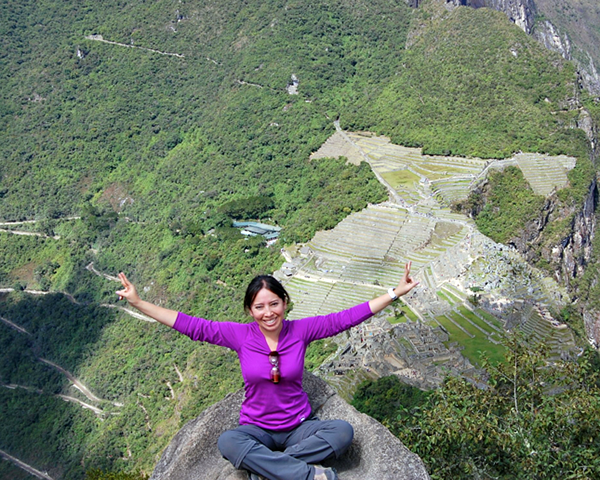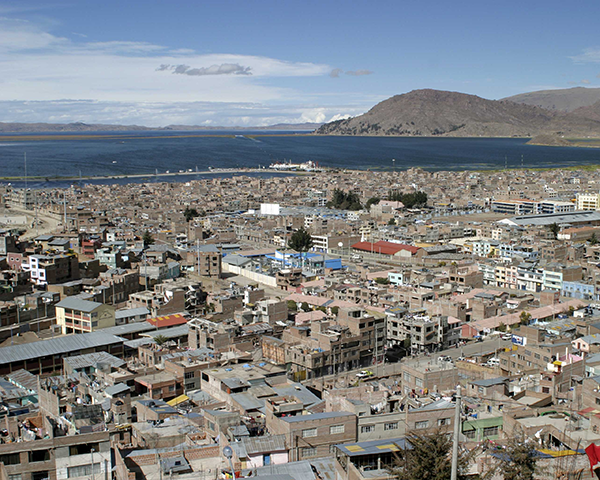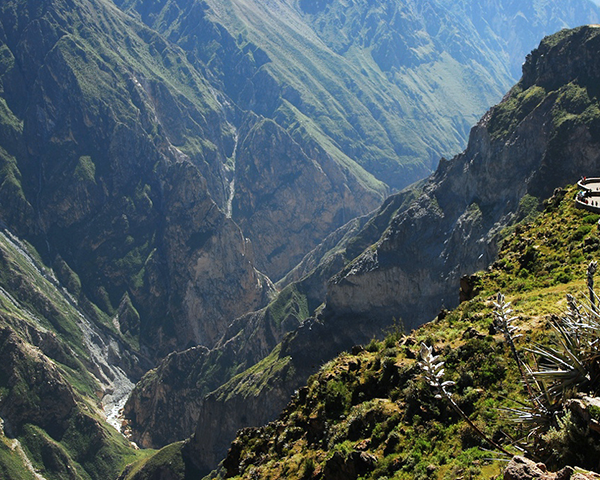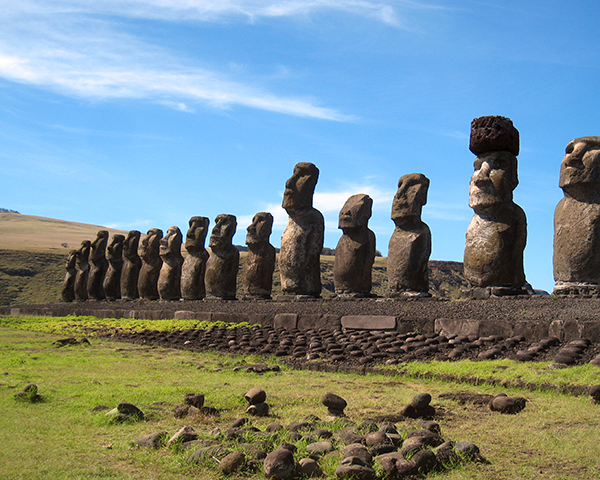Joe DeRose and Jocelyn Ramirez (both of R-WIT) each took separate trips to Peru this summer, both having just returned in the last month. The following is a summary of their amazing adventures:
Jocelyn Ramirez

A native of Peru, Jocelyn is from Lima. She went in mid-June for a wedding and extended her trip for two weeks to tour the southern part of Peru with her boyfriend. She went to six different towns over 13 days.
One of the highlights of her trip was Lake Titicaca, in Puno, where she had never been. The town is across from the Andes Mountains and is at a high altitude (12,556 feet). The altitude is tough for people because digestion takes a lot of energy and high altitude can make things difficult. It is common to drink cocoa tea with herbs that are common in the highlands of Peru that help people deal with the altitude. You are not allowed to bring cocoa leaves into the US but can get cocoa tea in any store in Peru.

Cusco is the main city to visit if you intend to visit Machu Picchu. Then you can take a train from Cusco to Aguas Calientes. This ride is about 4 hours. The other alternative is to hike to Machu Picchu, which begins a bit closer than Cusco, but is still 4-5 days. This hike is known as the Inka Trail.
Aguas Calientes is at the base of the mountain and is known for its hot springs. This was Jocelyn’s third time visiting, but she returned because she wanted her boyfriend to see many of the places she had seen in her youth. Machu Picchu only allows a capacity of 2500 people per day. The couple decided to hike Huayna Picchu, which was dangerously narrow and required a liability waiver!
Her favorite memory of the trip was visiting one of the real islands, called Taquile, at Lake Titicaca. “It is a place you can live, disconnected from the world and live off the land!” said Jocelyn.
Joe DeRose

Joe has always had an interest in Peru and from late April to early May he went on the trip of a lifetime. He is preparing a detailed trip report for his friends and family and the following are excerpts from his personal webpage:
I try not to get too attached to material possessions — but over the course of this amazing trip, I really started to gain a sense of appreciation for my single pair of shoes.
These shoes juggled the gas, brake, and clutch on our two SUVs through snarling urban traffic jams, herds of animals along the highways, rutted dirt roads, tire-paths through the pampas, cliff-edge switchbacks, exposed creek beds, dangerously rusted bridges, pitch-black tunnels, ocean-side precipices, and the sides of active volcanoes.
These shoes joined me at sea level and at 4,910 m, the highest point on which I’ve ever stood. They took me from the busiest international airport to the most remote inhabited place on earth, and back. They brought me to the edge of our planet’s second-deepest canyon, along that part of its longest and second-highest mountain range that gives birth to its largest river, to the shores of its highest navigable lake, and to the baked clay of one of its driest deserts.
These shoes carried me on jungle paths that have to be machete-cleared on a daily basis to keep the plant life at bay, to rock outcrops in the Alpine tundra where one must be careful not to disturb the flora that take hundreds of years to grow as big as my hand, and to the Nazca plain where nothing at all has grown for centuries.

These shoes padded quietly along the Colca Canyon overlook as I waited silent and breathless with the other visitors to see the majestic condors take their morning flight. They scraped pebbles for noise on mountain trails to put a bit of distance between myself and frightened snakes and scorpions. And they stomped with gusto as I was invited to join in a Rapanui dance and celebration before we were served a traditional meal.
These shoes walked me across the layers and layers of totora reeds that comprise the floating Uros Islands in Lake Titicaca. They brought me over weather-worn steps and stones of Inca ruins in the Sacred Valley. They stepped with me into a creek where our SUV got stuck in the mud after we followed some bad advice from the GPS. They carried me over the woven fibers that make up the Q’eswachaka rope bridge, this year’s reincarnation of a bridge-weaving tradition that goes back half a millennium. They worked their way among the stacked rocks that are used to mark places of beauty in the highlands. They gripped the basalt as I gazed into the immense crater of Rano Kau volcano, over a kilometer from side to side. They balanced along the narrow saline ridges that separate the salt terraces of Maras from each other and from the rivulets that have been feeding them for centuries. And they joined me on the asphalt and concrete in Cabanaconde’s Plaza de Armas at nightfall, where a lone trumpeter played for coins and I saw the Southern Cross (for the first time).
These shoes supported me when I could barely breathe after trying to run on the Altiplano, only to realize the desperate lack of oxygen on the world’s second-highest plateau. They gripped the cantilevered steps that the Inca appended to the sides of walls alongside dizzying valleys. And they steadied me in the tiny four-passenger Cessna as the plane rolled back and forth to show us a view of the Nazca Lines that the ancient Nazca people never dreamed of.
These shoes climbed the hill at Sillustani where pre-Inca funerary chullpas were built to face the rising sun. And they took me down to the western coast of Rapa Nui where I watched that sun set into the Pacific behind the moai at Ahu Tahai.

These shoes climbed with me to the temples and observatories and torture chambers of Machu Picchu, and then climbed further up to the summit of Huayna Picchu that towers above that fray. And they took me down — out of the blistering heat of the mountains and into the soothing depths of the curious ruins of Moray.
These shoes stood with me on the edge of the sea cliff from which the tangata manu raced to retrieve the sooty tern egg that would make him king of Rapa Nui for a year. They walked me into the volcano where the moai were carved, and walked me around — but never on, for that would be disrespectful — the ahu where those moai were placed.
And finally these shoes brought me home. These shoes may not last indefinitely on my feet, but I think they will endure forever in my soul.

Leave a Reply